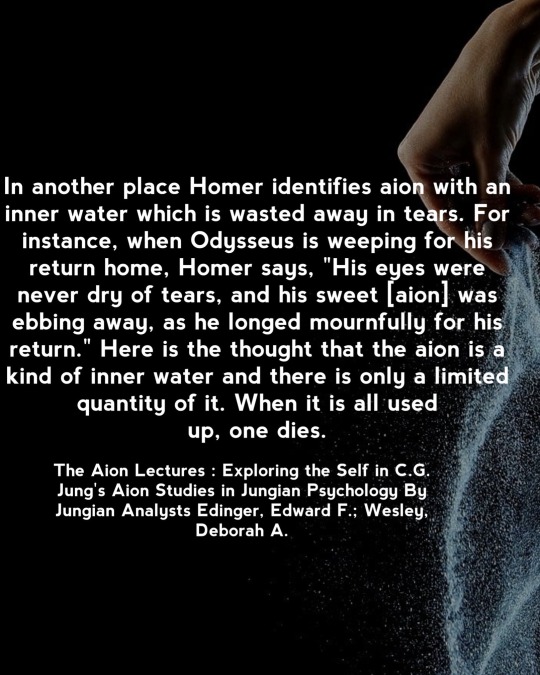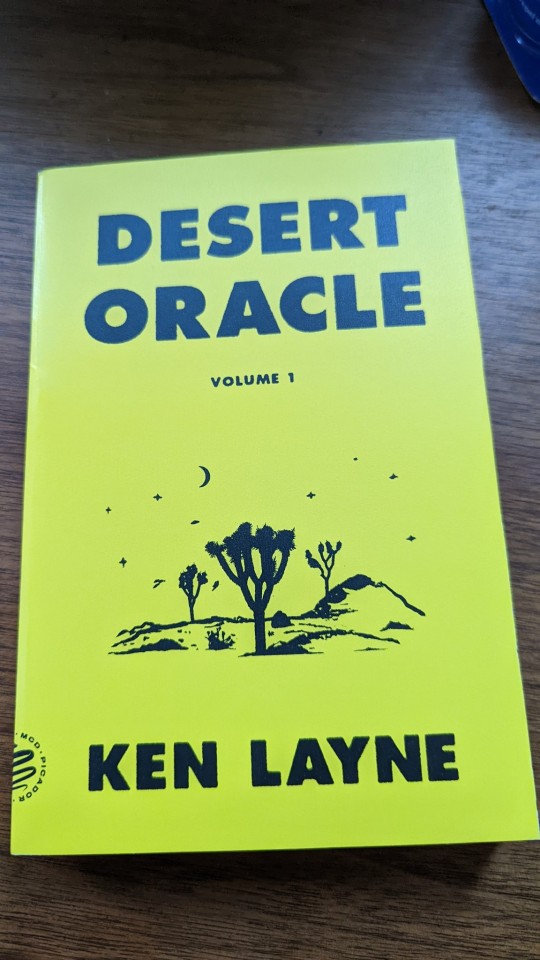#edward f. edinger
Explore tagged Tumblr posts
Text

Edward F. Edinger, Anatomy of the Psyche: Alchemical Symbolism in Psychotherapy
513 notes
·
View notes
Text
If we are gripped by a strong attraction to a person or a thing, we must reflect on it. As Jung says: Unless we prefer to be made fools of by our illusions, we shall, by carefully analysing every fascination, extract from it a portion of our own personality, like a quintessence, and slowly come to recognize that we meet ourselves time and again in a thousand disguises on the path of life. The same applies to our passionate antipathies. They also must be subjected to thorough analytic scrutiny. Whom do I hate? What groups or factions do I fight against? Whoever and whatever they are, they are a part of me; I'm bound to that which I hate as surely as I am to that which I love. The important thing, psychologically, is where one's libido is lodged, not whether one is for or against a particular thing. If we follow such reflections diligently, very gradually we will collect our scattered psyche from the outer world, as Isis gathered the dismembered body of Osiris.
The Mystery of the Coniunctio
Edward F. Edinger
417 notes
·
View notes
Text

Edward F. Edinger: Ego And Archetype
3 notes
·
View notes
Text
The Puer Aeternus Archetype
"The psychotherapist frequently sees cases of this sort. Such a person considers himself as a most promising individual. He is full of talents and potentialities. One of his complaints is often that his capacities and interests are too wide-ranging. He is cursed with a plethora of riches. He could do anything but can't decide on one thing in particular. The problem is that he is all promises and no fulfillment. In order to make a real accomplishment he must sacrifice a number of other potentialities. He must sacrifice a number of other potentialities. He must give up his identification with original unconscious wholeness and voluntarily accept being a real fragment instead of an unreal whole. To be something in reality he must give up being everything in potentia. The puer aeternus archetype is one of the images of the Self, but to be identified with it means the one never brings any reality to birth" (p. 14)
"It seemed as though the dream itself was adequate reality, as though just the fact that he could have such magnificent compositions in fantasy were sufficient reality to relieve him of any sense of obligation to realize them in fact. Such an attitude is an identification with the original unconscious wholeness, the provisional life, which avoids the hard work required to make the potential actual. Although he though the wanted to write, fantasies were unconsciously considered sufficient reality in themselves. Such a person is afraid to make the commitment required to create something real. He would lose the security of anonymity and expose himself to disapproval. He is afraid to submit himself to judgment by being something definite." (p. 22)
-Ego and Archetype, by Edward F. Edinger (1973)
1 note
·
View note
Text

Top, cropped photograph by Kevork Djansezian, Lindsay Lohan fan wearing a "Linnocent!" t-shirt is seen in front of the Beverly Hills Courthouse, July 20, 2010, Beverly Hills, California. Lindsay Lohan surrendered to serve her 90 day jail sentence after she was found in violation of her probation for the August 2007 no-contest plea to drug and alcohol charges stemming from two separate traffic accidents. Via. Original. Bottom, photograph by Keith Meyers, The frame marking its empty spot on the wall of the Isabella Stewart Gardner Museum in Boston where Rembrandt’s stolen “Storm” had been displayed, for the NYT editorial Isabella Stewart Gardner Heist: 25 Years of Theories, February 26, 2015. Via.
(...) after midnight on March 18, 1990, as St. Patrick’s Day festivities from the day before were winding down, her edict was broken. Two thieves dressed as Boston police officers persuaded a guard to let them in to investigate a “disturbance.” They handcuffed him and another watchman in the basement, duct-taped their wrists and faces and, for 81 minutes, brazenly and clumsily cut two Rembrandts from their frames, smashed glass cases holding other works, and made off with a valuable yet oddball haul.
It included the Rembrandts, Vermeer’s “Concert,” Manet’s “Chez Tortoni,” Degas sketches, a bronze-plated eagle, and a Shang dynasty vase secured to a table by a bulky metal device that by itself probably took 10 minutes to pull apart. Left behind were prizes like a Titian, some Sargents, Raphaels and Whistlers, and, inches from the Degas works, a Pietà sketch by Michelangelo.
“Sooner or later anybody who saw the real picture is going to be dead”
--
It is as though the psyche cannot come into existence as a separate entity until the death of the literal, the concrete, and the physical. The collective unconscious is equivalent to the land of the dead or the afterlife, and a descent into the collective unconscious is called a nekyia because an encounter with the autonomous psyche is felt as a death of this world.
Edward F. Edinger, from Anatomy of the Psyche: Alchemical Symbolism in Psychotherapy, 1985. Via.
1 note
·
View note
Text










Where does wild woman live? At the bottom of the well, in the headwaters, in the ether before time. She lives in the tear and in the ocean. She lives in the cambria of trees, which pings as it grows. She is from the future and from the beginning of time.
Clarissa Pinkola Estes
Aion was thought of as an inner water and it was also thought that after the death of the individual, that inner water was left as a snake; the snake was imagined as the soul of the departed one, inhabiting the tomb perhaps.
The Aion Lectures : Exploring the Self in C.G.
Jung's Aion Studies in Jungian Psychology By Jungian Analysts Edinger, Edward F.; Wesley, Deborah A.
#feminine magic#witch#alchemy#presence#oracle#love#esoteric#patriarchy#magic#consciousness#awen#aion#clarissa pinkola estes#Carl Jung#wild woman#witchy#witchy vibes archetypes
3 notes
·
View notes
Text

russellbrand ~ Instagram
quote by Edward F. Edinger
#Edward F Edinger#Edward Edinger#russellbrand#Russell Brand#relationship#love#breakup#heartbreak#moving on#strength#recovery#healing#quotes
39 notes
·
View notes
Text
Stopped by one of my favorite little occult bookstores






Anatomy of the Psyche, Alchemical Symbolism in Psychotherapy - Edward F. Edinger - A text going through Jung, finding every time he cites an alchemical text, and expanding on that.
The Orgone Accumulator Handbook - James DeMeo - A semi-rare text, contains discussions on construction and manipulation of Orgone energy capacitors.
Desert Oracle (and errata) - Ken Layne - A series of evocative short essays on deserts, magic, and mysticism.
390 notes
·
View notes
Text

Edward F. Edinger, Anatomy of the Psyche: Alchemical Symbolism in Psychotherapy
418 notes
·
View notes
Photo






— Edward F. Edinger
@creatornet event 01: favourites
— favourite deities: eris, greek goddess of strife & discord
#edit*#mythology*#**#eris goddess of chaos#eris#mythologyedit#mythedit#litedit#creatornet#creatornetevent01#greek mythology#greek myth
366 notes
·
View notes
Text
“The union of opposites in the vessel of the ego is the essential feature of the creation of consciousness. Consciousness is the third thing that emerges out of the conflict of twoness. Out of the ego as subject versus the ego as object; out of the ego as active agent versus the ego as passive victim; out of the ego as praiseworthy and good versus the ego as damnable and bad; out of a conflict of mutually exclusive duties- out of all such paralyzing conflicts can emerge the third, transcendent condition which is a new quantum of consciousness.”
- Edward F. Edinger, The Creation of Consciousness: Jung’s Myth for Modern Man
#jungian archetypes#psychology#quotes#carl jung#jungian psychology#occult#poetry#depth psychology#jung#consciousness#collective unconscious#c. g. jung
9 notes
·
View notes
Text
“Eating the forbidden fruit marks the transition from the eternal state of unconscious oneness with the Self (the mindless, animal state) to a real, conscious life in space and time. In short, the myth symbolizes the birth of the Ego. The effect of this birth process is to alienate the Ego from its origins. It now moves into a world of suffering, conflict and uncertainty. No wonder we are reluctant to take the step to greater consciousness.”
Ego And Archetype - Edward F. Edinger
0 notes
Quote
All words are psychic organisms; each has at its core some fundamental human experience and there will be an image of that experience embedded in the etymology of the word. As one traces the way its usage has evolved, a whole organism unfolds.
Edward F. Edinger, The Aion Lectures, Lecture 1, p. 15, 24:34.
13 notes
·
View notes
